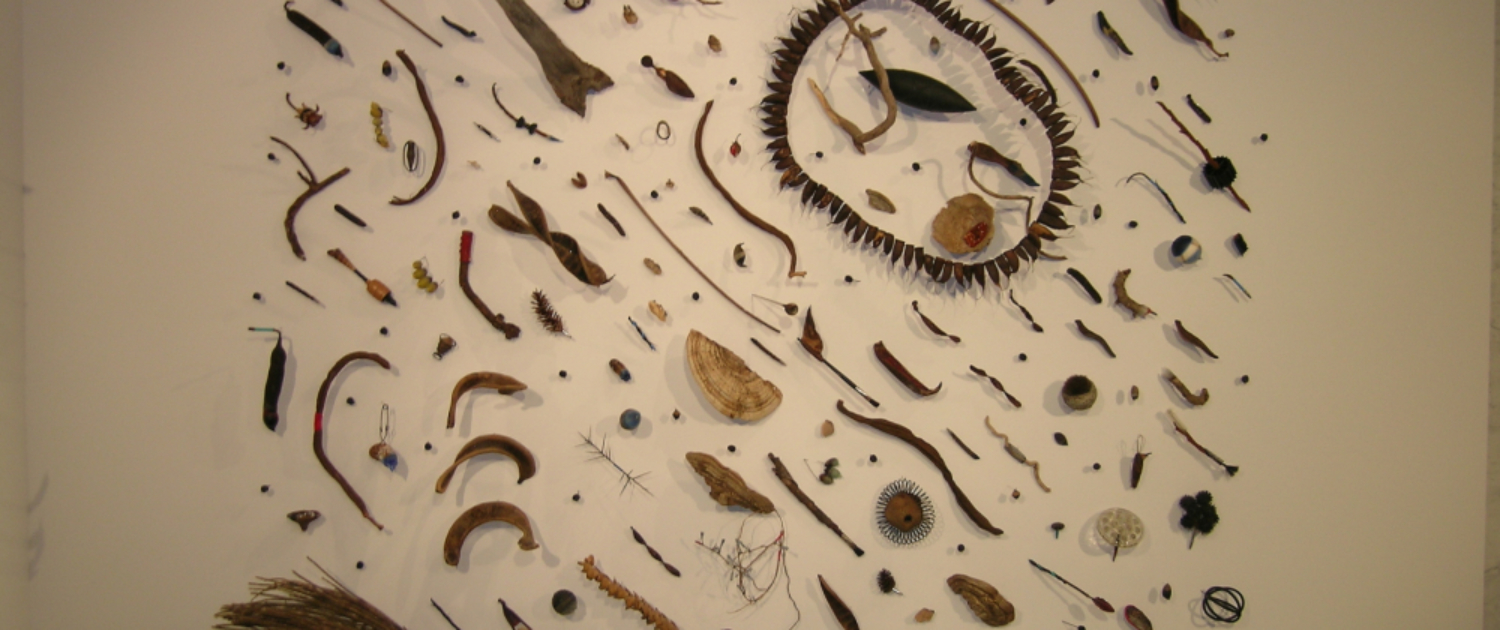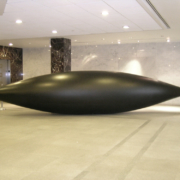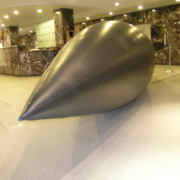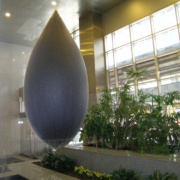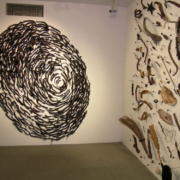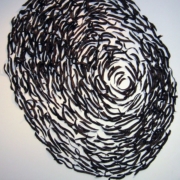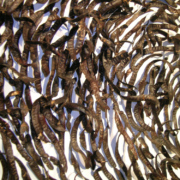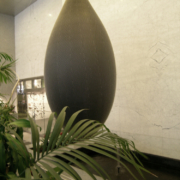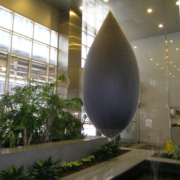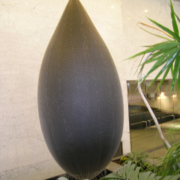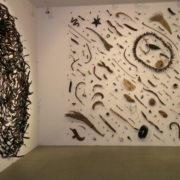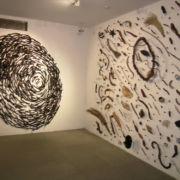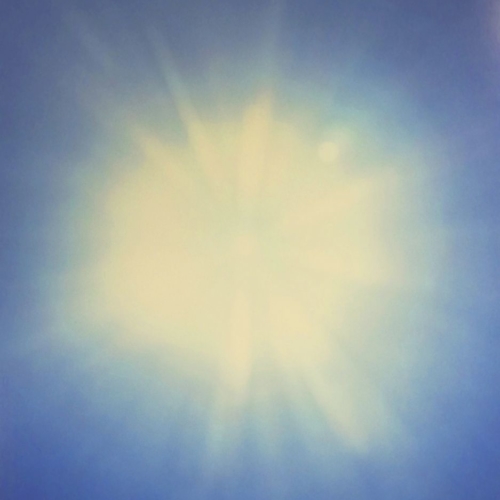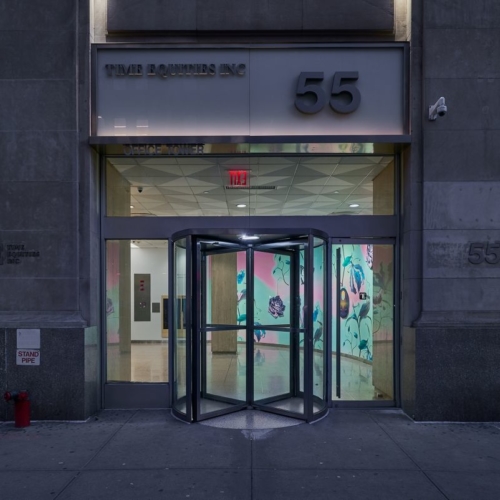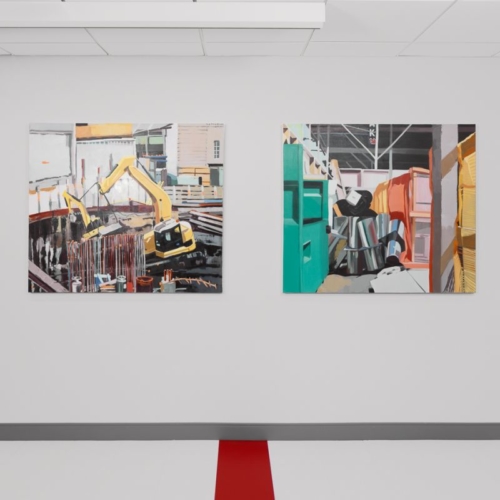125 Maiden Lane – New York, New York
March 06, 2009 – September 18, 2009
The exhibition Ron Klein – Naked Green curated by Elisabeth Akkerman comprises two site-specific wall installations Moved to Square, 2009; RE:ID 2009 and three over scale sculptures Naked Green 2001-2, Sticks and Stones, 2001-02 and Blackeye, 2003, representatives of the interwoven focal points contained in the artist’s work.
The earlier work, large scale floor bound and suspended sculptures are the iconic result of his explorations of nature’s architecture and its essence. The wall composition RE:ID, 2009, honey locust pods collected from the grounds of the Barnes Foundation in Philadelphia, derived from the artist’s own thumbprint, stands for his interest in the human condition. And in Moved To Square, an intense assemblage of found objects of the concrete and tropical jungles, he reinvents through appropriation, changing the semantics of association, the use and structure of the organic and man made materials.
____________________________________________________
Klein’s passionate eye for the material of the natural world has taken him during the past 18 years to far flung places like Madagascar, Burma (Myanmar), Amazonian and Costa Rican rainforests; with the same eye and intensity he mines the urban jungle, his own neighborhood streets and woods. Ron Klein began exhibiting publicly in 1984. Since 2006 Ron Klein is presented by Howard Scott Gallery, New York. His work is held in a number of private and public collections. Discussions and reviews of his work have been appeared in such publications as Art in America, The Village Voice, Sculpture Magazine, and Art Forum.
_____________________________________________________
Ron Klein: Naked Green is curated by Elisabeth Akkerman and is sponsored by the Time Equities Inc. (TEI) Art-in-Buildings Program. TEI is committed to enriching the experience of our properties through the Art-in-Buildings Program, an innovative approach that brings contemporary art by emerging and mid-career artists to non-traditional exhibition spaces in the interest of promoting artists, expanding the audience for art, and creating a more interesting environment for our building occupants, residents, and their guests.

